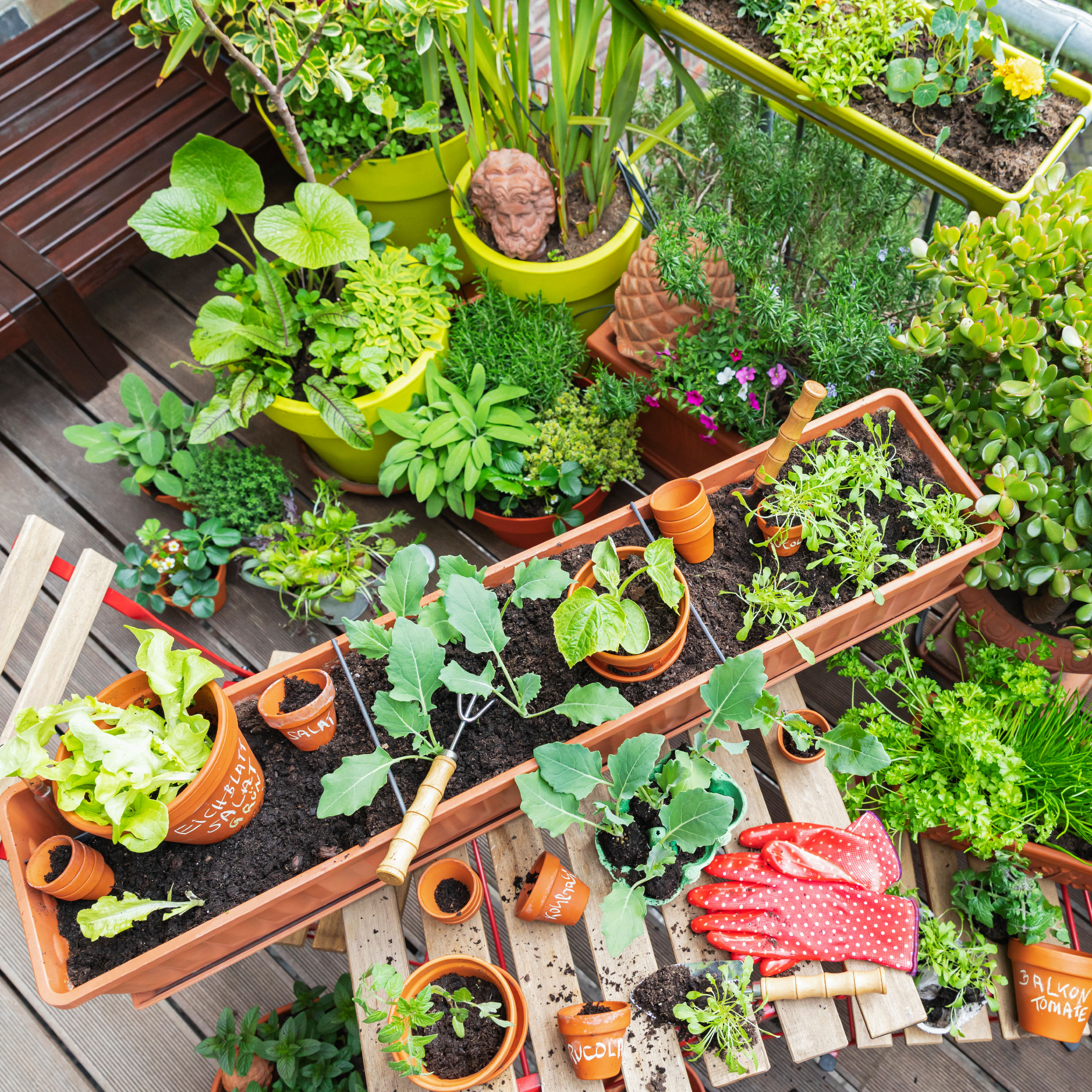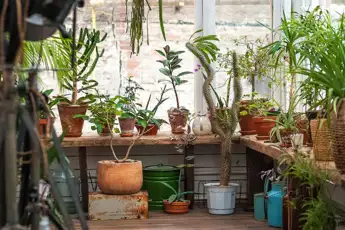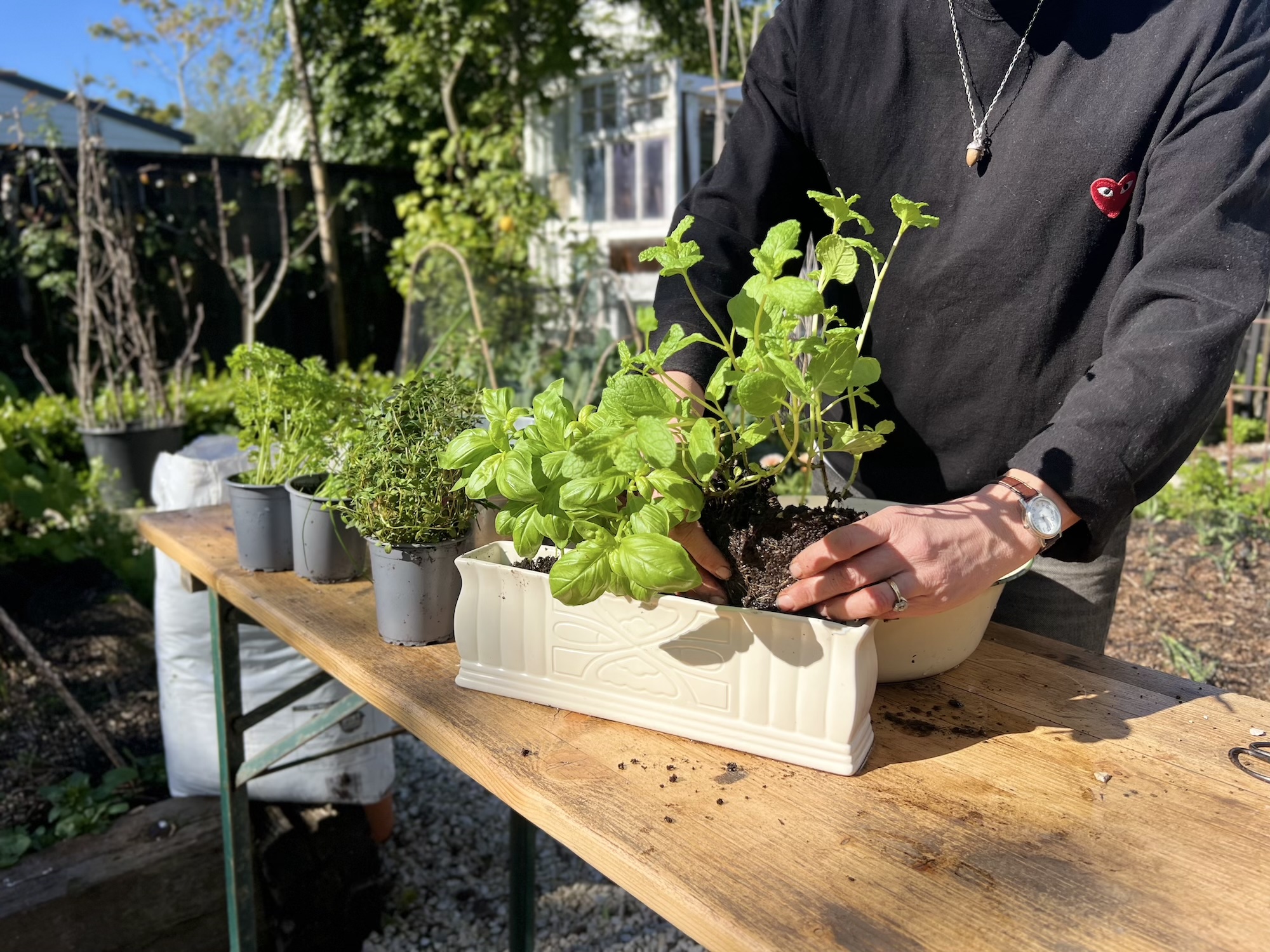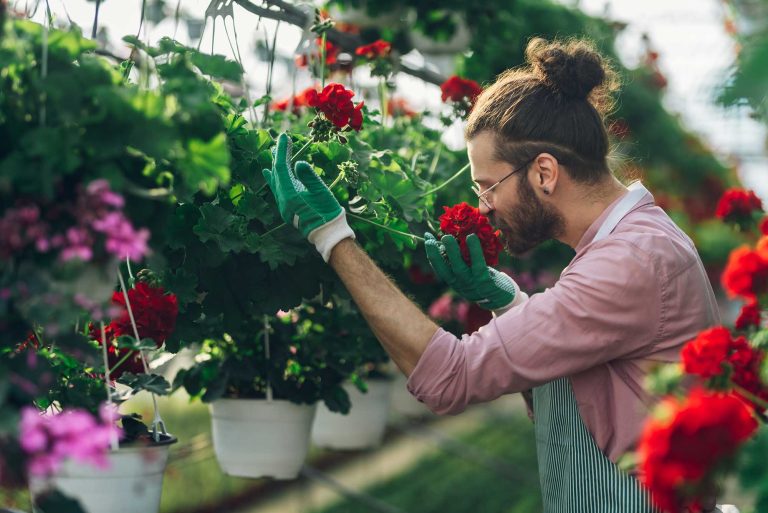Imagine stepping into your home and being greeted by a vibrant, lush indoor garden, thriving even in the depths of winter. Sounds like a dream, right?
But it’s a dream well within your reach. If you’re wondering when to start growing plants indoors for your garden, you’re not alone. Timing is everything, and getting it right can transform your gardening experience. Whether you’re a seasoned green thumb or just starting out, knowing the perfect moment to plant indoors can save you time, effort, and ensure your plants are healthy and thriving.
Dive into this guide to unlock the secrets of indoor planting, and see your garden flourish like never before.

Credit: www.gardeningknowhow.com
Choosing The Right Time For Indoor Planting
Choosing the right time for indoor planting ensures healthy growth. Begin planting 6-8 weeks before the last frost date. Early starts help plants thrive when moved outdoors.
Choosing the Right Time for Indoor Planting Starting your indoor garden at the right time can make a significant difference in the success of your plants. While it might be tempting to start planting as soon as you feel the urge, timing is crucial. Let’s explore how you can assess your climate conditions and understand plant growth cycles to make the most of your indoor garden.Assessing Climate Conditions
Climate plays a pivotal role in determining the best time to start your indoor garden. Consider your local weather patterns and seasonal changes. If you live in a region with harsh winters, starting seeds indoors can give you a head start before the ground outside warms up. Use tools like online climate zone maps to understand your specific area’s conditions. This knowledge helps you plan when to start seeds indoors, aligning with outdoor planting schedules. It also ensures your plants will thrive when they transition outside.Understanding Plant Growth Cycles
Every plant has its unique growth cycle, which dictates when it should be started indoors. Some plants, like tomatoes and peppers, need a longer growing season and benefit from an early indoor start. Check seed packets or online resources for specific growth cycle information. Knowing the germination and maturity times allows you to plan indoor sowing accordingly, ensuring plants are ready for transplanting when the weather is right. Have you ever tried growing plants indoors too early, only to find them struggling to survive? Timing can make all the difference. By understanding your climate and the plants’ growth cycles, you can ensure a thriving indoor garden that transitions seamlessly to the outdoors.
Credit: www.yates.com.au
Selecting Suitable Plants For Indoor Growth
Growing plants indoors can transform your living space into a lush oasis. Choosing the right plants is crucial for success. Indoor conditions vary from those outdoors. Light, humidity, and space influence plant growth. Select plants that thrive indoors for a flourishing garden.
Popular Indoor Garden Varieties
Some plants adapt well to indoor environments. These varieties are popular for indoor gardening:
- Spider Plant:Easy to care for and purifies the air.
- Snake Plant:Tolerates low light and requires minimal watering.
- Pothos:Fast-growing with trailing vines, perfect for shelves.
- Peace Lily:Beautiful blooms and thrives in low light.
- Succulents:Require little water and come in many shapes.
Matching Plants To Your Space
Consider your available space before selecting plants. Small spaces benefit from compact plants like succulents or herbs. Vertical gardens or hanging planters save floor space. Larger rooms can host bigger plants like fiddle leaf figs or rubber trees.
Light is another key factor. South-facing windows offer bright light for sun-loving plants. North-facing windows suit low-light plants like snake plants. Assess your space’s conditions to ensure plant health and growth.
Preparing Your Indoor Gardening Space
Creating a thriving indoor garden starts with a well-prepared space. Proper planning ensures your plants receive the care they need. With the right setup, you can enjoy lush greenery year-round. Focus on key elements like lighting, temperature, and humidity. These factors are crucial for plant health.
Optimal Lighting Solutions
Lighting is essential for indoor plants to grow. Choose LED grow lights for energy efficiency. They mimic sunlight and promote healthy growth. Place lights at proper distances to avoid plant stress. Some plants need more light, while others thrive in shade. Adjust lighting based on plant type. Regularly check and maintain your lighting system.
Temperature And Humidity Considerations
Temperature affects plant growth and health. Keep your space between 65°F to 75°F for most plants. Use thermostats to monitor and maintain this range. Humidity is also vital; aim for 40% to 50%. Use humidifiers if the air is too dry. Ensure proper air circulation to prevent mold and mildew. Check both temperature and humidity regularly.
Essential Tools And Materials
Starting your indoor gardening journey is an exciting adventure that requires a few essential tools and materials. Having the right supplies not only makes the process smoother but also increases your chances of success. Let’s dive into what you need to kickstart your indoor plant growing.
Soil And Potting Mixes
The foundation of any thriving plant is the soil or potting mix. Unlike outdoor soil, indoor mixes are specifically designed to provide proper drainage and aeration. Choose a mix that suits the plant type you’re growing. For instance, succulents prefer a sandy mix, while leafy greens thrive in nutrient-rich soil.
Consider adding perlite or vermiculite to enhance drainage, especially for plants that dislike excess moisture. You can also experiment with organic compost to enrich your mixes, giving your plants an extra nutrient boost.
Containers And Planters
Choosing the right container is crucial. The size, material, and drainage capabilities directly impact your plant’s health. Small herbs can start in compact pots, while larger plants may need spacious containers to accommodate root growth.
Ensure your planters have drainage holes to prevent waterlogging, which can lead to root rot. Materials like terracotta are breathable and help regulate moisture, making them ideal for beginners. Consider repurposing household items as creative planters—an old teapot or a vintage jar can add charm to your indoor garden.
Starting Seeds Indoors
Gardeners often begin growing seeds indoors to extend the planting season. Timing depends on the type of plant and local climate. Generally, start indoor planting six to eight weeks before the last frost date.
Starting seeds indoors gives gardeners a head start on the growing season. It allows control over the environment, ensuring optimal conditions for seedlings. This practice is crucial for regions with short growing seasons. By starting indoors, plants grow stronger before facing outdoor challenges.Seed Selection And Preparation
Choosing the right seeds is essential. Consider the climate and length of the growing season. Select seeds suitable for indoor starting, like tomatoes and peppers. Check seed packets for specific instructions. Before planting, inspect seeds for quality. Remove any damaged or discolored ones. Soaking seeds in water overnight can speed up germination. Use clean containers to prevent diseases. Sterilize pots and trays with a mild bleach solution.Planting Techniques For Success
Use a well-draining seed-starting mix. Avoid garden soil, which may contain pests. Fill containers with the mix, leaving room at the top. Moisten the mix before planting seeds. Plant seeds at the recommended depth. Cover lightly with soil to ensure proper germination. Label each container with the plant type and date. This helps track growth progress. Maintain a warm environment for seedlings. A temperature of 65-75°F is ideal. Use a heat mat if necessary. Ensure adequate light, using grow lights if needed. Water seedlings gently to avoid disturbing them. Keep the soil moist but not waterlogged. Transplant seedlings outdoors after the last frost date. Harden them off by gradually exposing them to outdoor conditions. This helps them adjust to their new environment.
Credit: www.thesagejournal.com
Caring For Indoor Plants
Growing plants indoors for your garden can begin as early as late winter. This timing allows seedlings to develop strong roots before transitioning outside, ensuring a vibrant and flourishing garden come springtime.
Caring for indoor plants is essential for a thriving garden. Indoor plants need special attention to thrive. They are sensitive to their environment. Understanding their needs will help them grow healthy and strong.Watering And Nutrient Guidelines
Proper watering is crucial for indoor plants. Overwatering can harm them. Ensure the soil is slightly dry before adding water. Check the soil moisture with your finger. Different plants have different water needs. Research your plant’s specific requirements. Nutrients are vital too. Use a balanced fertilizer for indoor plants. Follow the instructions on the label. Fertilize every few weeks during the growing season. This ensures your plants get the nutrients they need.Managing Pests And Diseases
Pests can damage indoor plants quickly. Regularly check leaves and stems for signs of pests. Common pests include aphids and spider mites. Remove them by hand or use insecticidal soap. Diseases can also affect indoor plants. Keep the area clean and well-ventilated. This helps prevent fungal diseases. If you spot any disease, remove affected parts immediately. Use fungicides only if necessary. Always follow the product instructions carefully. By caring for your indoor plants, you ensure they stay healthy. This contributes to a successful indoor garden.Transplanting Indoor Plants To Outdoor Gardens
Starting plants indoors ensures a strong start before they face outdoor conditions. Timing is key; begin early spring to allow seedlings to mature. Gradually introduce them to the outside world for a seamless transition.
Transplanting indoor plants to outdoor gardens is an exciting phase for gardeners. It allows your seedlings to flourish in natural sunlight. Transitioning plants can be tricky. Timing and proper techniques are crucial. Plants need the right conditions to thrive outside.Timing And Techniques
Timing is key when moving plants outdoors. Wait until the last frost has passed. Check local weather forecasts for safe temperatures. Usually, late spring is ideal. Avoid transplanting during extreme weather. Choose a cloudy day for transplanting. Direct sunlight can harm delicate seedlings. Water plants a day before moving. Moist soil helps roots settle. Loosen the soil in the garden bed. Create small holes for each plant. Ensure roots have room to spread.Acclimating Plants To Outdoor Conditions
Acclimation helps plants adjust to their new environment. Start by placing plants outside for a few hours daily. Increase exposure gradually over a week. Choose a sheltered spot initially. Protect them from harsh wind and direct sun. Monitor for signs of stress. Wilting or yellow leaves indicate trouble. Adjust their exposure if needed. Water regularly during acclimation. Keep soil consistently moist. After a week, plants should be ready. Transplant them into their permanent garden spot.Expert Tips For Indoor Gardening
Growing plants indoors offers many benefits. It allows you to garden year-round, regardless of the weather outside. But when should you start growing plants indoors for your garden? Timing is crucial. Starting too early or late can affect plant growth. Below are expert tips to guide you in indoor gardening.
Maximizing Plant Growth And Health
Choose the right spot for your indoor garden. Ensure the area gets enough light. Use grow lights if natural light is limited. Monitor temperature and humidity levels. These factors affect plant health. Water your plants consistently. Check the soil first to avoid overwatering. Use the right soil mix for each plant type. Fertilize regularly to support growth. Rotate plants for even light exposure. This prevents them from leaning.
Troubleshooting Common Challenges
Pests can invade indoor gardens too. Inspect plants regularly for signs of insects. Use natural remedies to control them. Yellow leaves might indicate overwatering or nutrient deficiency. Adjust your watering schedule. Ensure your plants get enough nutrients. Mold can form in damp areas. Improve air circulation to reduce moisture. Prune dead leaves and branches. This helps your plants stay healthy.
Frequently Asked Questions
When Is The Best Time To Start Indoor Planting?
The best time to start growing plants indoors is late winter or early spring. This timing allows seedlings to be ready for transplanting outdoors when the weather warms up. You should also consider the specific needs of the plants, as some may require earlier or later starts.
How Do I Choose Indoor Growing Plants?
Select plants that thrive indoors, like herbs, leafy greens, and certain flowers. Consider the light and space available in your home. Some plants need more sunlight, while others can thrive in low-light conditions. Research the growth requirements of each plant to ensure successful indoor gardening.
What Are The Benefits Of Growing Plants Indoors?
Indoor gardening offers many benefits, including year-round cultivation and protection from pests and harsh weather. It also improves air quality and brings aesthetic appeal to your home. Additionally, growing your own food indoors can be a rewarding and sustainable practice, contributing to a healthier lifestyle.
How To Prepare Soil For Indoor Plants?
Use a high-quality potting mix that ensures good drainage and aeration. Avoid garden soil, as it can compact and hinder plant growth. Add organic matter like compost to enrich the soil. Check the pH level to match the specific needs of the plants you’re growing indoors.
Conclusion
Starting your indoor garden is exciting and rewarding. Timing is key for healthy plants. Early spring suits many indoor starters. Check plant needs and adjust as needed. Consider light, temperature, and water. Small steps lead to big garden success. This journey enhances your gardening skills.
Enjoy watching your plants thrive indoors. Soon, they will move to the outdoor garden. Cultivate patience and care. You’ll see growth and beauty unfold. Indoor gardening is a delightful beginning. Happy planting!








